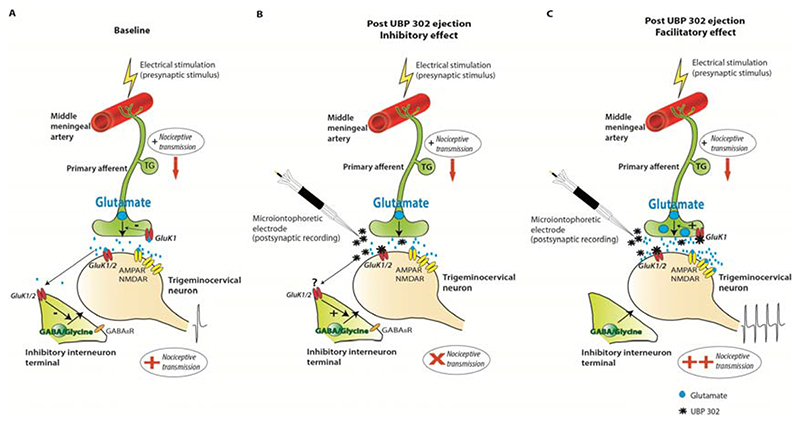Figure 5. Proposed mechanism of action of microiontophoresed UBP302 on trigeminovascular activation.
Electrical stimulation of the middle meningeal artery will activate fibers arising from the trigeminal ganglion (TG) and increase neuronal firing of second order neurons in the trigeminocervical complex.
A. During baseline recordings, activation of primary afferents innervating the middle meningeal artery causes glutamate release in the trigeminocervical complex. Glutamate activates post-synaptic kainate receptors in addition to AMPA and NMDA receptors activation, promoting trigeminocervical nociceptive transmission. Pre-synaptic kainate receptors on primary trigeminal afferents could be activated by glutamate and control glutamate release, whereas activation of kainate receptors on inhibitory interneurons is also possible, and will modulate inhibitory synaptic transmission. B. Local application of UBP302 by microiontophoresis can selectively block post-synaptic kainate receptors on second order neurons and inhibit nociceptive transmission, most likely in the absence of kainate receptors on the pre-synaptic trigeminal nerve fiber. Blockade of kainate receptors on inhibitory GABAergic terminals could occur due to UBP302 diffusion, and this could additionally account for the resultant analgesic effect. However, as we did not directly study this, such a blockade of kainate heteroreceptors on GABAergic interneurons is shown with a “?”. In such a synaptic environment post-synaptic kainate receptors play an important role in trigeminovascular nociceptive transmission and their selective blockade could prove a beneficial treatment for migraine. C. In a different synaptic environment where both pre- and post-synaptic kainate receptors are present on trigeminal fibers and second-order trigeminocervical neurons respectively, local application of UBP302 by microiontophoresis can selectively block post-synaptic kainate receptors on trigeminocervical neurons. In addition blockade of pre-synaptic kainate receptors on primary afferents might inhibit the negative control feedback of glutamate release by kainate receptors. This results in increased glutamate release upon stimulation of the trigeminal fibers innervating the middle meningeal artery. Released glutamate could then act on a bigger scale on AMPA and NMDA receptors and facilitate nociceptive transmission. In these neurons it is also possible that post-synaptic GluK1 kainate receptors do not mediate sensory transmission.

